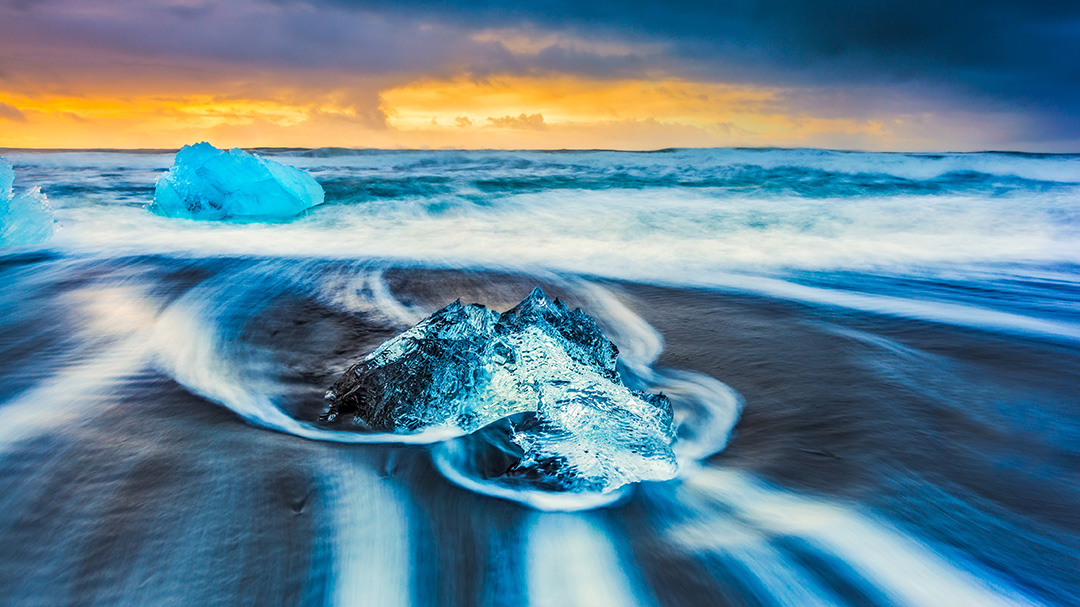
The folklore of Iceland is something that goes much deeper than the fictional tales you usually hear of. The history behind the island’s fascinating interest in trolls and elves shapes the natural landscape, adding a layer of depth to its scenery. Not only are the stories fascinating, but some verge on being believable…
Bárdur Snæfellsás
The creature known as Bárdur Snæfellsás formed a key part of the Icelandic sagas, which were originally written in the 14th century. Descending from a human mother and a half-giant, the half-troll creature called Dumbur, Bárdur left his birth place of Southern Norway and set sail for Iceland. He arrived at the Snæfellsnes peninsula where he built a farm to provide for his family.
Nearby Arnarstapi was home to his half-brother, Þorkell. He was also half-giant. After Þorkell’s son pushed Bárdur’s daughter onto a drifting iceberg. She vanished into the North Atlantic Ocean by herself. Luckily, she was unharmed. However, a feud between Bárdur and Þorkell was created which led to many battles between the pair and Þorkell’s sons. After defeating them all, he suddenly vanished from the region.
Interestingly, both the Rauðfelsdsgjá Gorge and Arnarstapi play host to key signs of the half-human, half-troll existence. Bárdur was said to have thrown Þorkell’s sons into the Rauðfelsdsgjá Gorge when hearing of his daughter’s disappearance. In addition, Arnarstapi (located on the Snæfellsnes peninsula) is home to large monolith built in stone in remembrance of the legendary figure. People of the town still regard him as a protector who looks over the entire peninsula.
The grave of Bergthor and its legend
The grave of Bergthor and its legend is a fascinating tale. Based on a sacred agreement between Bergthor and a local farmer, the farmer agreed to take Bergthor’s body after his death and bury him next to Haukadalur. Bergthor told the farmer he would find his staff at his door as a sign of his passing. In return, Bergthor promised to offer the contents of his kettle which would be waiting for him by his body.
After his death, the farmer visited the cave and began to look for the kettle. Upon finding it, he was disappointed to find only leaves inside. He thought Bergthor had fooled him. However, when one of the farmer’s men took some leaves out of the kettle, he carefully placed some inside his glove and later discovered it was full of gold!
They all rushed back to the cave in search of the kettle, but it had vanished. Despite this, the farmer stuck to his promise and buried him north of the church at Bergthorsleidi, which can still be found today.
The most amazing part of the story is the ring from Bergthor’s staff remains on the church door to this very day (supposedly).
Elves (are real!)
Astonishingly, 62% of the nation believe that the existence of elves is more than just a fairy tale (according to a 2007 study by the University of Iceland). Although the statistic seems rather farfetched, it doesn’t come as too much of a surprise. The country’s intriguing landscapes and rich history lend themselves perfectly to the folklore and story-telling of magical creatures.
A famous example believed by many Icelandic natives are Huldufólk, also known as the hidden people. These are elves or hidden creatures that form a big part Icelandic folklore. They are believed to be located across the entire island. And make no joke, because they’re taken very seriously, so much so that people often build tiny wooden elf houses in their gardens.
Iceland road builders even consult elf experts before routing a new road or highway – they believe it may interfere with rock piles and outcroppings which are known to be key elf habitats on the island.
Overall, for an island so deep in geological and geographical heritage, the laws of science appear to take a back seat with many people. But it’s the whimsical tales and age-old folklore that make Iceland all the more endearing, giving a magical feel to its natural landscapes.